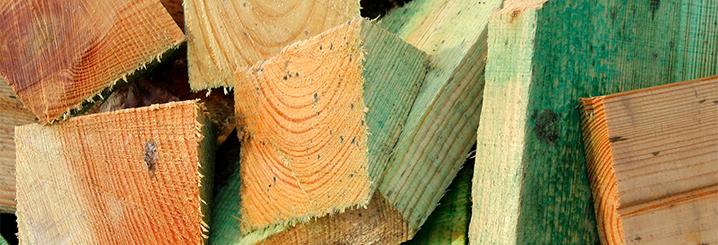When and how to sow a lawn

It's everybody's dream to have a perfect green lawn. Probably because, along with tall trees, ornamental shrubs and garden furniture, it is an element that makes a garden inviting and relaxing.
Although very attractive, a lush lawn is never achieved by accident, it is the result of daily effort and a clearly-defined cultivation process, in which sowing the seed is without question a fundamental stage. Whether you want to grow a utility lawn, classic lawn or even a wildflower lawn, choosing the right type of seed is as crucial as choosing the right time to sow it.
Lets' look at how to choose the best time to sow lawn seed and the best techniques to obtain a perfect lawn.
When to sow a lawn
The best times to sow a “traditional lawn” (cool season grasses) such ryegrass, meadowgrass or tall fescue are spring and autumn, when the temperature of the soil is around 10°C.
Sowing when the ground is cold prevents the seed from germinating and will produce a thin and patchy lawn.
The best months for sowing are therefore March and April, when the temperatures have stabilised and there is no risk of a late frost, or September and October, because, although the ground still retains some summer heat, it is no longer prone to infestation or fungal infections. If you decide to sow in autumn, always make sure that the grass will have time to grow before the onset of winter.
Sowing warm season grasses, such as gramagrass, zoysiagrass, or bermudagrass requires higher temperatures. It is therefore better to wait until the end of May, when the ground temperature has risen above 20 °C.
When you sow in late spring, don't forget to weed thoroughly beforehand and choose seeds that mature rapidly to prevent re-infestation.
Prepare the soil
Before starting to sow, check that the ground is free of weeds, debris and stones. If necessary, use a scarifier. If you don't need to scarify the ground, you can start by turning it over using a mattock or, better still, a rotary tiller such as the MH 175 RK, that is ideal for working medium-sized sites. Remember to break up the soil to a depth of at least twenty centimetres: the ground must be firm but loose enough to cover the seeds to prevent dispersion. If the ground is too wet, try to dry it out by adding organic material; if instead it seems too dry, improve the drainage and add sand. Firm up the entire surface using a rake and repeat the operation at least three times every seven days to prevent the formation of sunken areas. Allow the ground to rest for a while, checking that no new weeds appear, then apply lawn food over the entire area, using approximately 150 g per square metre.
If you need help carrying any equipment or materials, use a professional powered barrow. The CR 450, for example, is perfect for transporting tools and heavy materials; it features fold-down sides and crawler tracks that make it extremely manoeuvrable and ensure maximum grip even over the slippiest ground.
How to sow a lawn
To create a thick green lawn, apply at least 50 g of seeds per square metre.
On smaller sites, you can sow the seed by hand. However, use of a seed spreader is necessary for large areas.
If you decide to proceed by hand, spread half of the seeds in one direction and half in the opposite direction or even at right angles to the first direction. To be sure that the seeds germinate in the ground, use a special screen to sow them more accurately. Growing inside the wires and posts of the screen, the seeds are protected from dispersion and germinate more easily.
If instead you have elected to use a seed spreader, spread the first half of the seeds up or down the site and the second half across the site.
After sowing
Once the seed has been sown, rake over the ground again using a spring tine rake, in order to partially cover the seeds, and water frequently to keep the ground moist.
After about three weeks, the seedlings should appear.
For the first twelve months after sowing, avoid walking on the lawn or placing heavy objects on it, such as pots, irrigation systems, or hosepipes. Excess stress or trauma can compromise the growth of the seedlings and prevent the root systems from developing fully.
Another problem to watch out for are birds which, being very fond of seeds, can seriously damage a newly sown lawn. Keep them off the site by using suitable devices.
When the grass has reached a height of 10 cm, you can give its first mowing.



